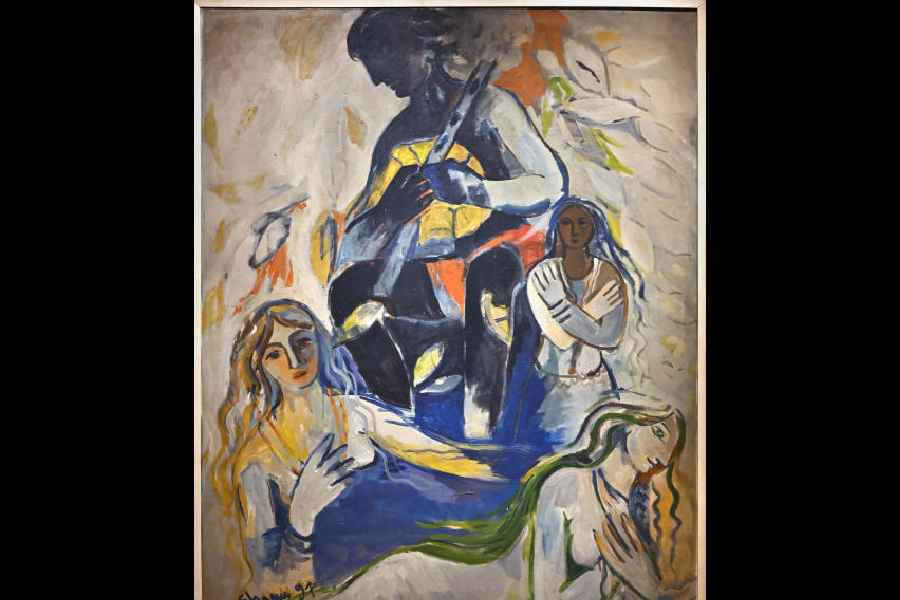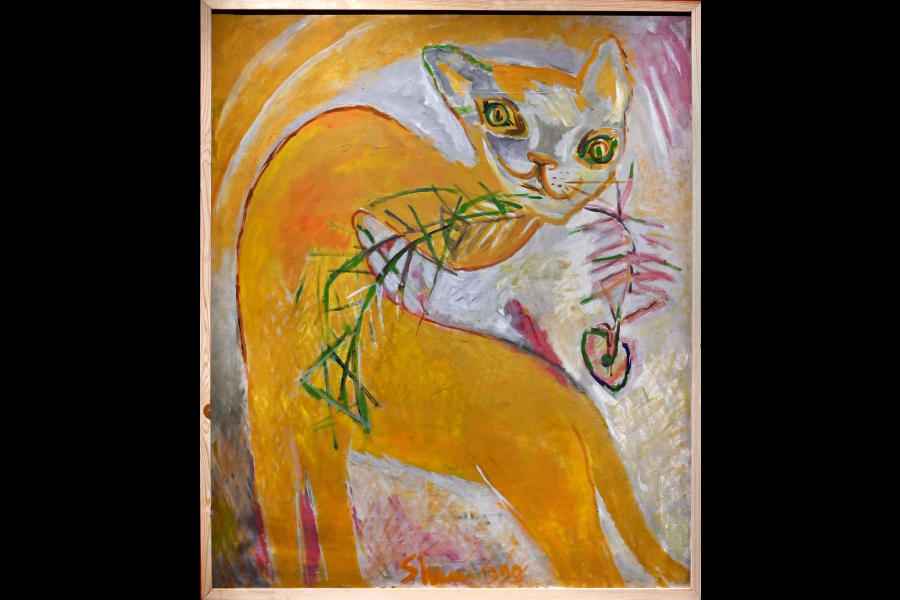Most Calcuttans have grown up seeing Shanu Lahiri’s works until recently — the Parama statue at the Science City roundabout (it was removed in 2014) and a massive mural on Justice Chandra Madhab Road (whitewashed in 2018) were once famous landmarks of the city. Yet, shows of Lahiri’s works have always been few and far between. This is unfortunate as Lahiri was a pioneer whose experimentation with the early modernist style of the likes of Chagall and Matisse blended seamlessly with a uniquely Indian idiom. Shanu Lahiri: Transitions and Intersections (held at Gallery Art Frequencies and curated by Vinayak Pasricha) was thus an important endeavour.

Flute Music by Shanu Lahiri
Lahiri’s portrayal of women is especially striking — Woman Combing Hair (picture, left), Lady and several untitled works catch women at leisure, an activity that few Indian artists have captured. The simple fluidity of her lines and the confident, broad brushstrokes belie the cleverness of her compositions, wherein she adds depth and shadows with the technique of nuagisme. Woman on a Rickshaw is a perfect synthesis of a scene that is unique to Calcutta and a style that is distinctive of French modernism. Lahiri was employing this idiom at a time when the Bengal School had prioritised the return to indigenous art traditions by shunning Western influences. She showed how even a recognisably Western grammar of painting could still be discernibly Indian.

Cat by Shanu Lahiri
The artist’s untitled self-portrait bore echoes of Le Peintre Devant ‘Le Soleil Rouge’ by Chagall; this was more poignant in its bareness. The French master’s imprint was also visible in Flute Music (picture, top right), but it was juxtaposed with a scene that is instantly identifiable from myths and folk traditions — that of Krishna playing the flute while gopinis covered themselves and begged for him to return their clothes.











